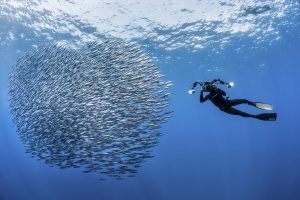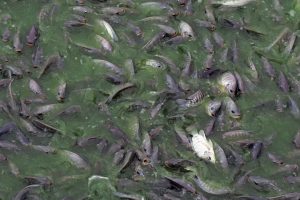Overfishing has pushed two families of stingray to the brink of extinction, according to the latest annual update to the “red list” of the world’s threatened species.
Wedgefishes and giant guitarfishes, known as rhino rays because of their elongated snouts, are now the most imperilled marine fish families in the world. All but one of the 16 species have been assessed as critically endangered by the list, which means they are one step from becoming extinct.
Increasingly intense and unregulated coastal fishing is driving their decline, with most snared accidentally as bycatch. Closely related to sharks, with some species growing up to three metres long, they live in shallow waters from the Indian and west Pacific oceans to the east Atlantic Ocean and Mediterranean Sea. Rhino ray meat is sold locally, while the fins are highly valued and internationally traded for shark fin soup.
“To prevent losing these ray families, it is critical that governments immediately establish and enforce species protections, bycatch mitigation programmes, marine protected areas, and international trade controls,” said Colin Simpfendorfer, co-chair of the IUCN species survival commission’s shark specialist group.
The annual list, compiled by the International Union for the Conservation of Nature (IUCN), based in Switzerland, is the most authoritative assessment of the status of the world’s plant and animal species. The latest list adds almost 9,000 new species, bringing the total assessed to 105,732 species – though this is thought to be a fraction of the number living on Earth. Some 28,338 species are threatened with extinction, and not a single one was recorded as having improved in status.
“This update clearly shows how much humans around the world are overexploiting wildlife,” said IUCN acting director-general, Dr Grethel Aguilar.
The report also warned that hunting for bushmeat and habitat loss had led to the decline of seven primate species, and comes months after a major report warned that nature loss would have grave impacts for human wellbeing.
“This update confirms the findings of the recent IPBES global biodiversity assessment: nature is declining at rates unprecedented in human history,” said Jane Smart, global director of the IUCN biodiversity conservation group. “Both national and international trade are driving the decline of species in the oceans, in freshwater and on land.”
She said decisive action was needed “at scale” to halt this decline, with the timing of this assessment seen as critical ahead of next year’s UN biodiversity convention summit in Kunming, China.
“Loss of species and climate change are the two great challenges facing humanity this century,” said Lee Hannah, senior scientist at Conservation International. “The red list addresses both, by letting us know the extinction risk faced by all species, including climate change, in that assessment. The results are clear, we must act now.”
The update also revealed dramatic declines in numbers of the world’s 18,000 freshwater fish species. More than half of Japan’s endemic species and one-third of Mexico’s are threatened with extinction, driven mainly by the loss of free-flowing rivers, increased agricultural and urban pollution and invasive species.
William Darwall, head of the IUCN freshwater biodiversity unit, said: “The loss of these species would deprive billions of people of a critical source of food and income, and could have knock-on effects on entire ecosystems.”
Earlier this year, a global analysis published in the journal Nature, showed that only a third of the world’s great rivers remain free-flowing, with the impact of dams drastically reducing the benefits provided by healthy rivers to people and nature.
The red list also added 500 deep-sea bony fish species, such as bioluminescent lanternfishes, which are found at depths of more than 1,000 metres, and face potential threats from deep-sea fishing, oil and gas extraction, and sediment plumes created by deep seabed mining operations.
The International Seabed Authority has granted 29 licences for exploration and is currently drawing up a code to govern eventual mining operations, but many scientists, along with civil society and campaign groups, are calling for a moratorium, saying that not enough is known about deep-sea marine life to adequately assess the ecological threat.
The scaly-foot snail (Chrysomallon squamiferum), which lives at depths of 2900 metres in the Indian Ocean, is the first hydrothermal vent mollusc to be added to the list. There is concern that if mining is permitted, its habitat could be severely reduced or destroyed.









